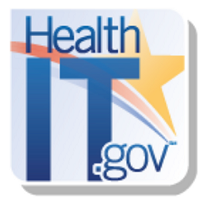 By Lana Moriarty/ Director, Office of Consumer eHealth, Office of Programs & Engagement, ONC
By Lana Moriarty/ Director, Office of Consumer eHealth, Office of Programs & Engagement, ONC
Twitter: @ONC_HealthIT
Melissa Crawford is a mother from Concord, NH. Her two year old daughter, Ava, has a congenital heart defect and was recently diagnosed with epilepsy. Melissa loves Ava’s physician’s patient portal since it allows her to easily book appointments and refill Ava’s medications online. But when Ava’s pediatrician needed medical records from Ava’s five specialists, the various patient portals did not provide all the health information the doctor needed. Melissa set off on a stressful and complicated journey to gather the information from the five specialists in time for Ava’s appointment with her pediatrician.
Melissa is one of three patients and caregivers personas you will meet in The Office of the National Coordinator for Health Information Technology’s (ONC) new report, Improving the Health Records Request Process for Patients: Insights from User Experience Research Link. Personas, like Melissa and Ava, are fictional characters created based on real patients and caregivers we spoke with for this report. This report explores their experiences with getting and using their health information, exercising their rights to access provided by HIPAA.
Patients Don’t Have Easy Access to All the Health Information They Need
Although patient health data is now available electronically more than ever before, our research found that patients and caregivers still face challenges accessing the information they need, when they need it. While caregivers, like Melissa, appreciate patient portal features, they found their portals provide only a snapshot of their health information. Individuals who need more detailed data for their care often have to request their medical records through their providers’ office or hospital. The medical record request process can be confusing for patients to navigate and is not often available electronically.
After months of waiting and difficulties, Melissa successfully received her daughter’s records but expressed frustration over the process: “It takes so much time. I just wish the process was the same everywhere.”
A Patient-Centered Request Process Benefits Patients and Health Systems
The report also includes an analysis of medical record release information and forms from 50 large health systems across the country and the results of discussions with health system professionals and stakeholders. We found that both patients and health systems have shared needs: like patients, health system’s medical records managers are also burdened with a fragmented process. But both patients and health systems have the same goal – to get the patient their medical records. Improving the process is a win-win for both patients and health systems.
Take Action Today to Improve Patients’ Experience with Accessing their Medical Records
When individuals have access to their health information, they can better coordinate their care and have greater control over their health and wellbeing. Innovations, like application program interfaces (APIs) and mobile apps, hold promise that in the near future people will be able to seamlessly and securely access, use, and share their health information. But in the meantime, there are short-term solutions to make the process less stressful for everyone today. Our report outlines design opportunities to improve patients’ experience and create a user-friendly request process.
We drew upon the report’s findings to develop new content in ONC’s Patient Engagement Playbook. Chapter 2.5: Support Electronic Record Requests provides actionable tips for healthcare providers, care teams, and office staff to make the medical record request process more streamlined, transparent, and electronic.
Whether you’re a provider, hospital staff, an innovator, or a patient, everyone can work together to create a better experience for patients and their caregivers, like Ava and Melissa, and make it easier for them to get their health information when and where they need it.
This post was originally published on the Health IT Buzz and is syndicated here with permission.
